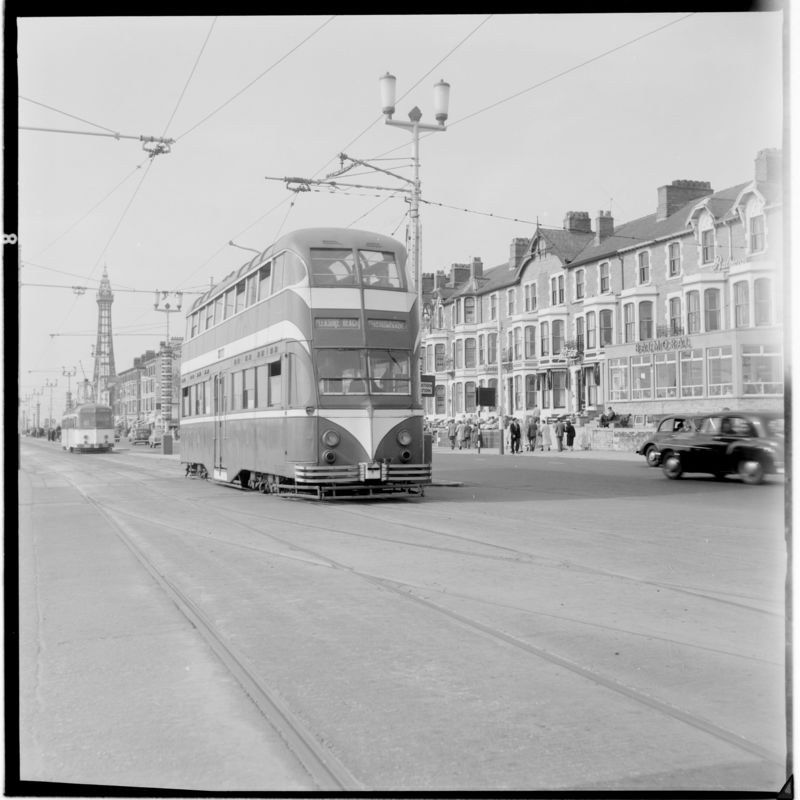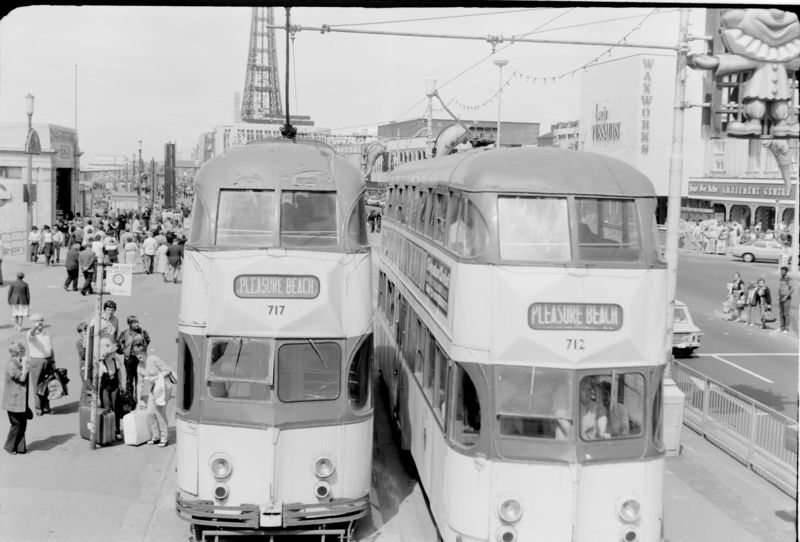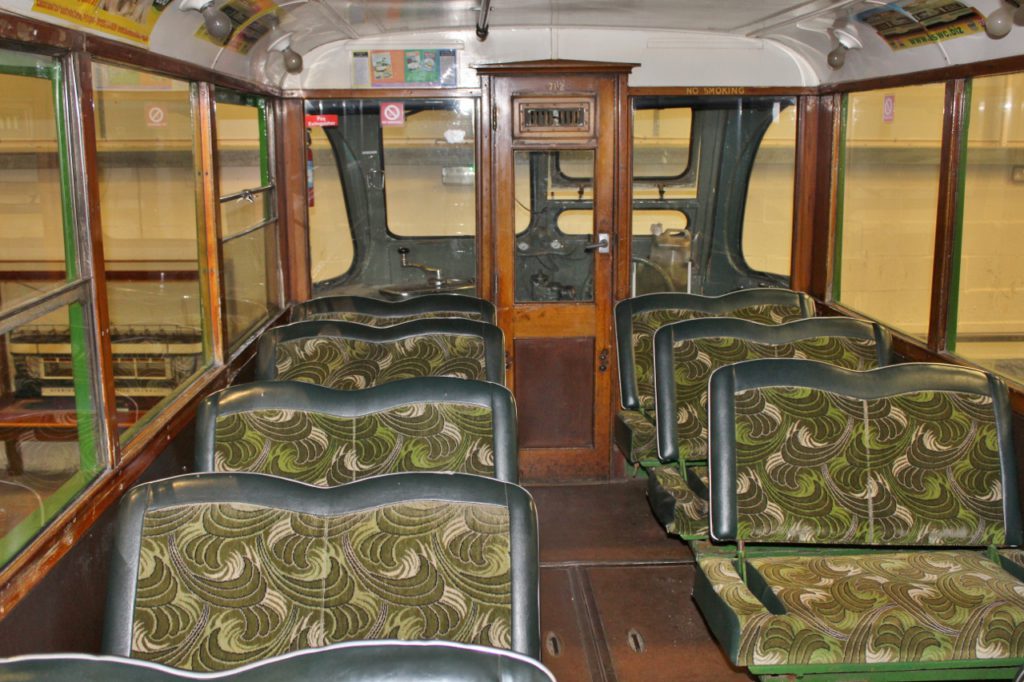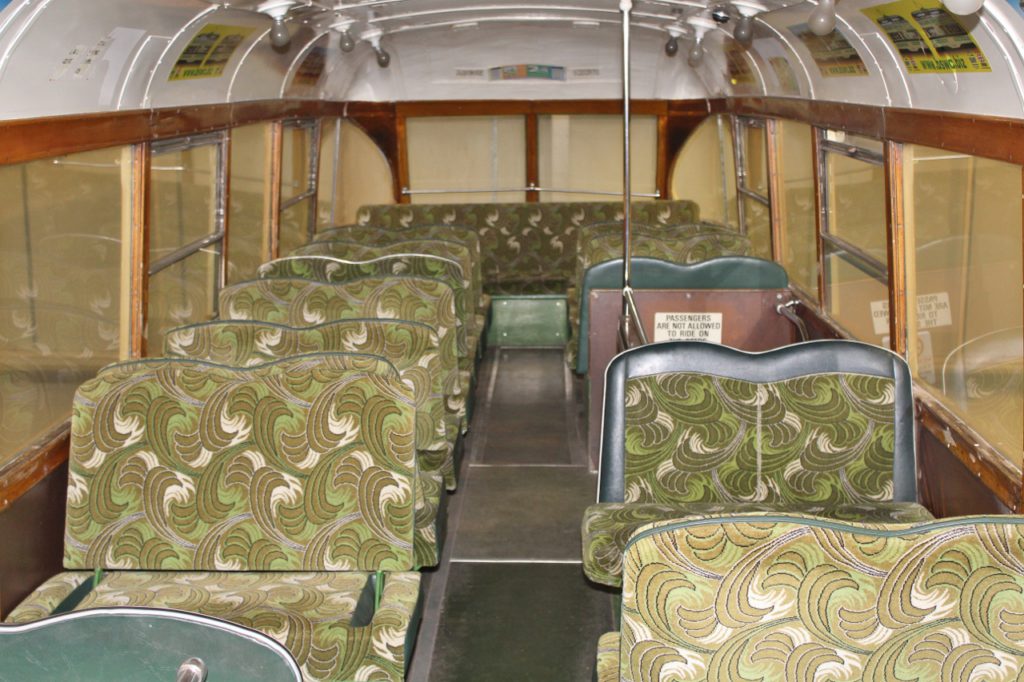Blackpool Corporation No. 249
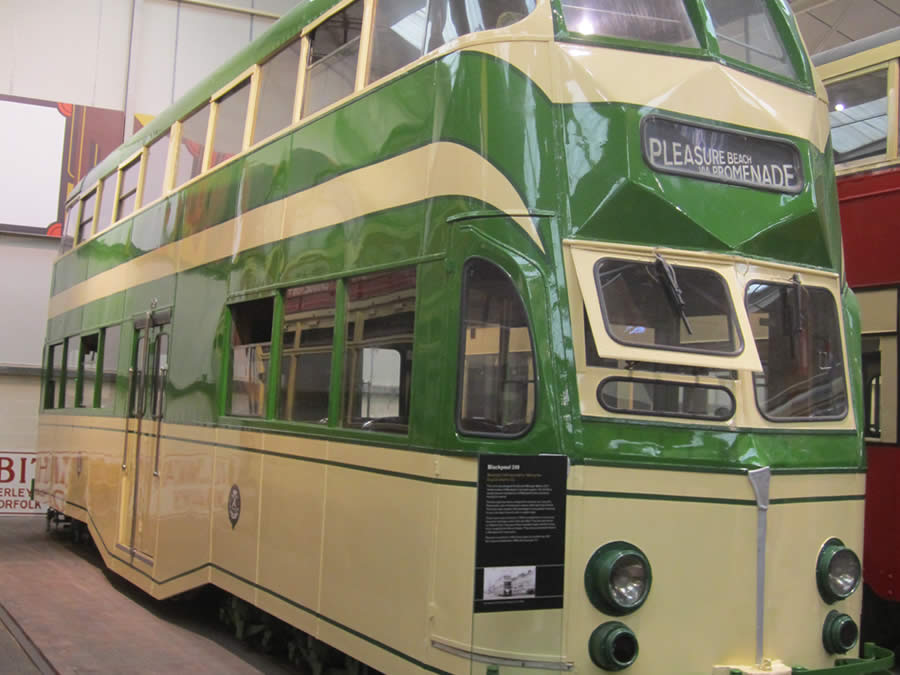
Photo: Jim Dignan
As part of its ambitious modernisation programme of the early 1930s, Blackpool Corporation introduced three new classes of modern streamlined tramcars to replace earlier vehicles that were felt to be showing their age. Hot on the heels of the single-deck railcoaches (represented at Crich by a later version, 298) and the “luxury toast racks” (represented by ‘boat tram’ 236) came a streamlined double deck tram that was envisaged as a replacement for the turn-of-the-century ‘Dreadnoughts’ (represented at the tramway museum by 59). Like its predecessor, the new tram had a legendary seating capacity (94).
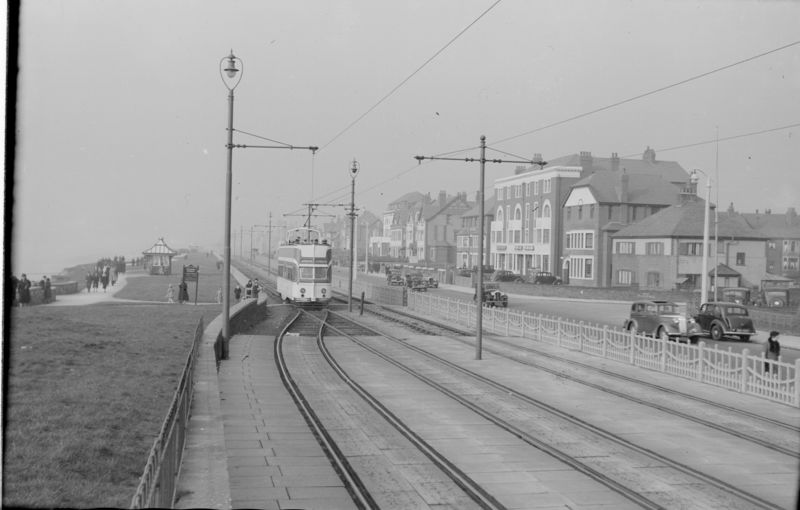
Blackpool 249 at Bispham, looking north. H.B. Priestley, 9/4/1939.
The first of this “luxury dreadnought” class of double-decked trams was introduced as an open-topped prototype in 1934 and 249 was the last of a dozen additional similar vehicles that were built to this design.
249 cost £2,688 when new and, shortly before its arrival in Blackpool, it featured in a trade exhibition held at the English Electric Strand Road Works between 3rd and 8th December 1934. It was one of the last full-size standard gauge open-topped tramcars to enter service in Britain.
A further fourteen fully enclosed tramcars of similar design were ordered at the same time and their rather rounded streamlined appearance prompted the alternative nickname of “Balloons.”
The double decked fleet shared many of the hall-marked styling features associated with the original single-decked railcoaches including central entrances, art deco styling features which included curved glass light fittings and (in the case of fully enclosed trams) sliding roof windows and thermostatically-controlled radiators.
249 initially formed part of the double-deck promenade service between South Shore and Bispham, which was extended to Cleveleys from 8th June 1935. As they were fitted with stair head shutters, the open topped cars could run as single deck trams during the winter months.
Blackpool’s trams were heavily used during the second world war as a result of increased demand from evacuees and also military personnel stationed nearby and, because of this, it was decided to fit the open-topped cars with top covers, starting with 249 in August 1941.
Specification
- Type of tram
- Electric double deck streamlined passenger tram originally built as an ‘open-topper’ but provided with a top cover in 1941/2
- Livery
- Green and cream
- Seating capacity
- 94 (40 downstairs, 54 upstairs) though its capacity was reduced to 84 between 1941 and 1954
- Date built
- 1934
- Date entered service
- 19th April 1935
- Manufacturer of body
- English Electric
- Manufacturer of truck
- English Electric
- Gauge
- 4’ 8½”
- Motor
- EE 305 type, 2 × 57 hp
- Controller
- EE DB1 Z4
- Current collector
- Pantograph
- Modification
August 1941 – top cover fitted and wooden seats on the upper deck replaced by upholstered ones. The bench seats at the end were removed at the same time.
During the war the green and cream livery was replaced with a mainly green one to reduce visibility, which lasted till the late 1950s.
The additional bench seating on the upper deck was restored after 1954, bringing the capacity back to 94. 1960 single destination indicator fitted in place of the original somewhat illegible double indicators.
1968 renumbered as 712; overhauled and given a new livery in 1982.
July 1984, fitted with pantograph- Withdrawn from service
Withdrawal from passenger service in 2010. [Its final passenger carrying service was on 7th November 2009]
- Subsequent history
Refurbished and repainted in pre-war livery by Blackpool Transport Services in 2010 prior to its acquisition by the National Tramway Museum at Crich.
- Restoration history
See above.
- Current status
- Restored as a static exhibit in 1930s green and cream livery.
- Current location
- Exhibition Hall
- Future plans
Acquired primarily as a static exhibit. A full restoration to operational condition would be a major – and expensive – undertaking.
- 1935 – 2010Fully operational on original tramway
- 2010 – 2011In storage
- 2011 –On display

